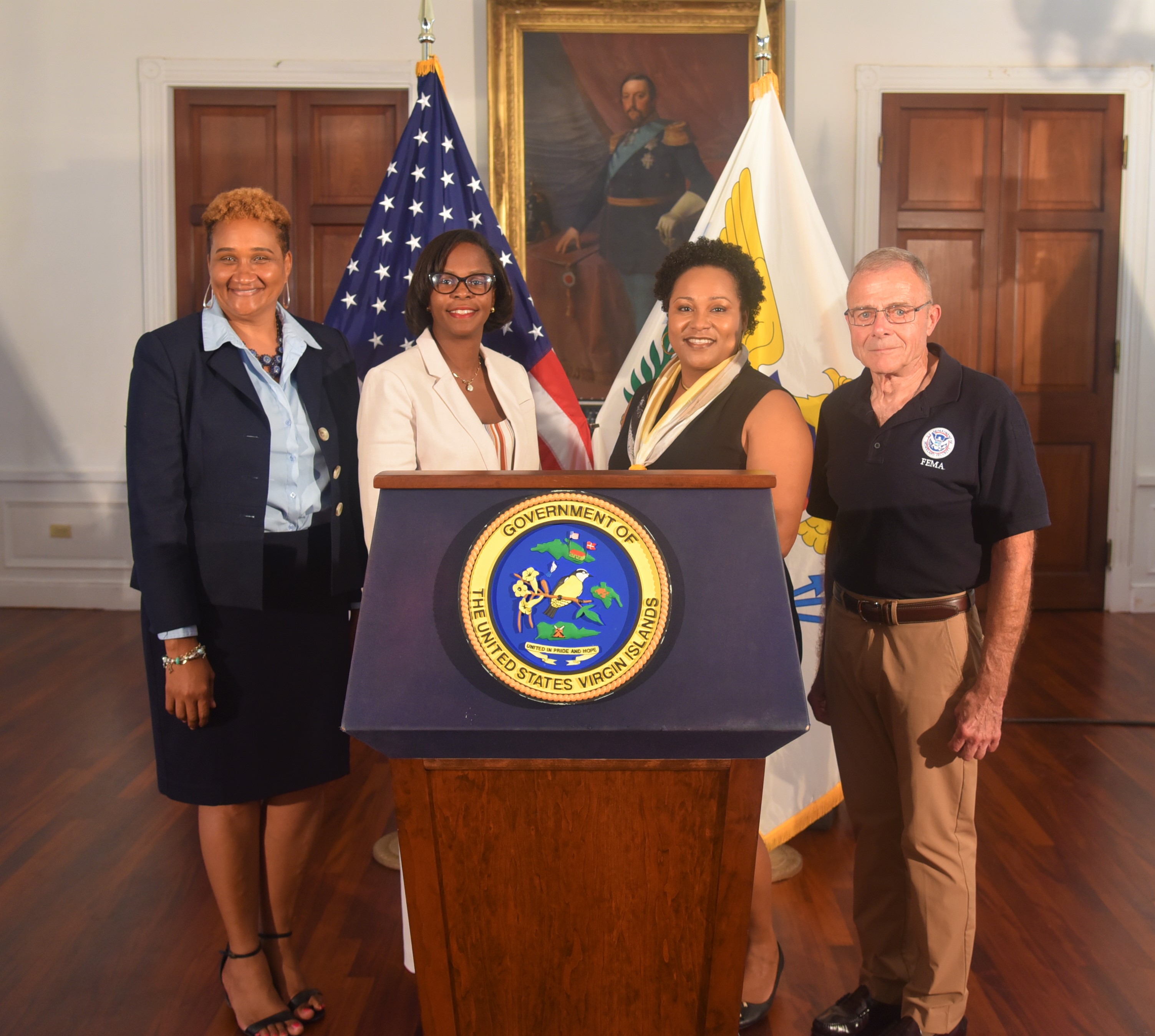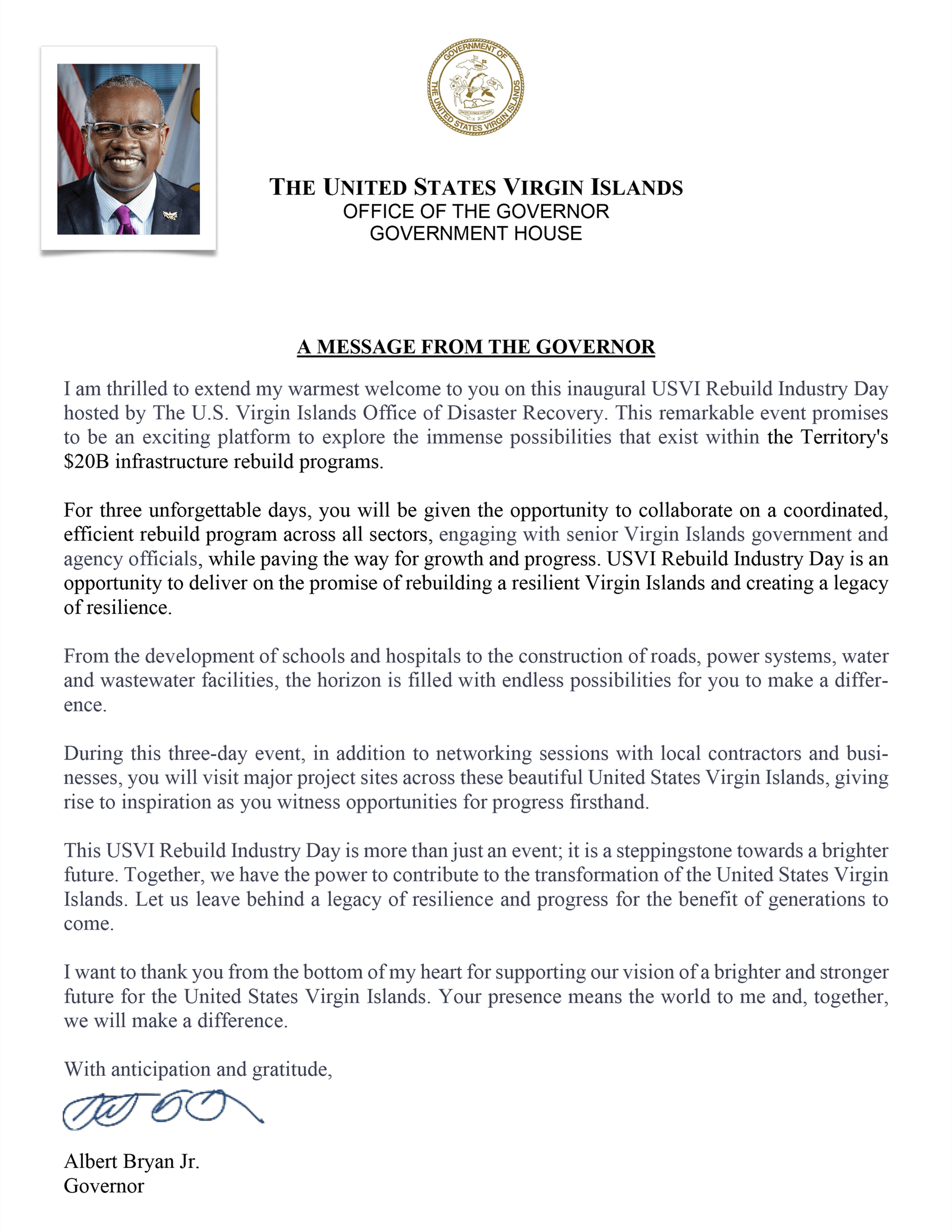
February 24, 2020
FEMA Approves Industry Standards for Education
and Other Critical Agencies
ST. CROIX, U.S. Virgin Islands – The Office of Disaster Recovery and the Virgin Islands Department of Education, today, announced that the Federal Emergency Management Agency (FEMA) had approved industry standards that will ensure newly constructed schools and office buildings can withstand future catastrophic weather events and meet professional norms for providing service.
“This approval will green light pending projects and signals continued progress and our partnership with local and federal stakeholders,” said Director Adrienne L. Williams-Octalien, Office of Disaster Recovery, at the press briefing at Government House on St. Croix.
The agreed upon guidelines will govern all aspects of construction, from the size of classrooms to the type of lighting used throughout school campuses. The production of industry standards is a first in the V.I. Department of Education’s history.
Industry standards are produced by recognized formal organizations, government agencies, trade groups, industry associations, professional societies, and standards producers. FEMA and territorial representatives work closely to determine acceptable standards for each industry. Industry standards for health, roads, communication, and fire services were approved in 2019.
FEMA Federal Coordinating Officer William L. Vogel said, “We are very excited to work with the Territory as they continue the recovery process. I want to commend them for the great work they have done to create education industry standards. We will continue to work with the Territory to ensure we build back stronger, safer, and more resilient.”
These guidelines will allow for the construction and purchase of equipment at current industry standards as opposed to refurbishing old equipment or rebuilding it to its condition before the storms. Administrators can purchase necessary equipment in accordance with existing guidelines guaranteeing that new facilities will be modernized and up to code. Contractors can build to the most recent regulations ensuring a more resilient structure designed to reflect the expectations set forth for each industry.
“The approved industry standards are an example of the milestones we have to achieve in order to develop new schools in our territory,” said Education Commissioner Racquel Berry-Benjamin during today’s press briefing. “I would like to encourage everyone to remain committed and exercise patience. This is a perfect example that all will be well, and we will accomplish the goal of building new schools in our Territory.”
Dr. Dionne Wells-Hedrington, Ed.D., Department of Education chief operations officer who spearheads the Department’s effort to construct new schools in the Territory, said, “Today is a very good day for the Department of Education. We now have established standards that say what our facilities should have, how they should be built, and standards that identify what kind of learning environment our students should have. This is going to be a reality; we are going to rebuild schools.”
These approvals granted under Section 428 of the Robert T. Stafford Disaster Relief and the Emergency Assistance Act (Stafford Act) and Section 20601 of the Bipartisan Budget Act of 2018 (BBA) authorizes FEMA to aid in the restoration of disaster-damaged components of a facility or system to industry standards without regard to its pre-disaster condition.
With the newly approved industry standards, the New School Construction Advisory Board will continue to move forward with developing the design of new educational facilities in conjunction with the DLR Group; the architectural consultants procured to assist with the reconstruction of public school facilities in the Territory.
The Government of the Virgin Islands continues to work closely with FEMA representatives, both locally and federally, and appreciates the ratification of the latest industry standards for education.
The Office of Disaster Recovery
“Building a Legacy of Resilience”

